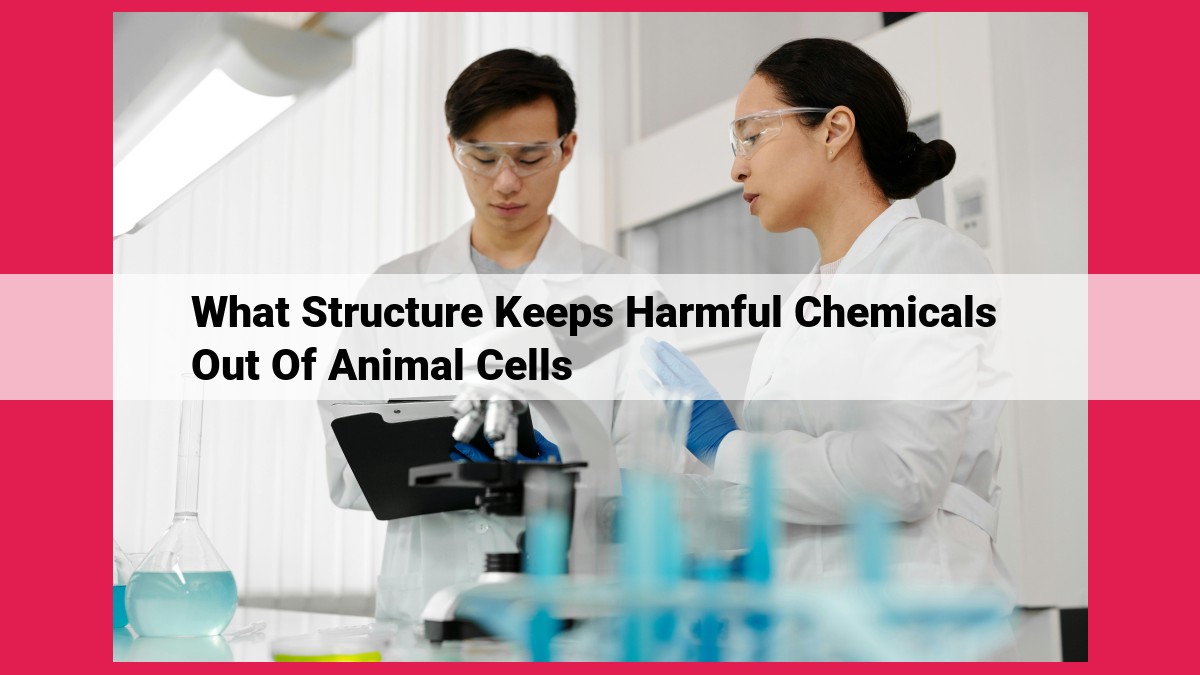The Role Of The Cell Membrane In Animal Cells: A Protective Barrier With Selective Permeability

In animal cells, the cell membrane acts as a protective barrier, shielding them from harmful chemicals. This selectively permeable barrier, composed of a phospholipid bilayer, regulates the movement of substances in and out of the cell. Membrane proteins, such as channels, carriers, and receptors, facilitate the transport of specific molecules, ensuring controlled entry and exit of substances crucial for cell function.
Animal Cell Membrane: The Gatekeeper of Life
Every living cell is enclosed within a thin, yet remarkable structure called the cell membrane. Think of it as the gatekeeper of life, meticulously controlling the flow of substances in and out of the cell. This phospholipid bilayer, composed of a double layer of lipids, acts as a selective barrier, allowing only certain molecules to pass through its hydrophobic interior.
Embedded within this membrane are a multitude of membrane proteins. These proteins serve as channels, carriers, and receptors, facilitating the transport of essential molecules across the membrane. Ion channels allow charged particles to move down their concentration gradients, while carrier proteins bind to specific molecules and transport them across the membrane against their concentration gradients. Receptors, on the other hand, bind to specific signaling molecules, triggering cellular responses.
The cell membrane is not a static structure but rather a dynamic entity that constantly rearranges itself to maintain the cell’s homeostasis. It’s this delicate balance of selective permeability and the intricate interplay of membrane proteins that makes the cell membrane the essential gatekeeper of life, protecting and regulating the inner workings of the cell.
Plant Cell Wall: The Strength and Support of Life
In the realm of plant cells, where intricate structures dance with the symphony of life, the cell wall stands as a formidable guardian, shielding the delicate contents within. Unlike animal cells, which lack a rigid cell wall, plants possess this remarkable protective layer that provides them with unparalleled strength and support.
The Waxy Cuticle: A Shield against Adversity
The outermost layer of the plant cell wall is the cuticle, a thin yetresilient waxy coating that acts as the first line of defense. This hydrophobic barrier repels water and other harmful substances, safeguarding the cell from dehydration and external threats. Its flexibility allows plants to adapt to changing environmental conditions, ensuring their survival in a myriad of habitats.
The Exoskeleton: A Rigid Framework for Strength
Beneath the cuticle lies the exoskeleton, a rigid framework composed of cellulose and other complex carbohydrates. This scaffolding provides plants with the structural support they need to stand tall, resist gravity, and withstand the forces of nature. It allows them to reach towards the sun, maximizing their exposure to the life-giving rays that fuel photosynthesis.
The Combined Defense System: A Trio of Protection
The cell wall, cuticle, and exoskeleton work in concert to create a formidable defense system. The cuticle repels water and other threats, while the exoskeleton provides structural support. Together, they form a protective barrier that safeguards the cell from physical damage, pathogens, and desiccation. This intricate system ensures that plants can flourish in diverse environments, from lush rainforests to arid deserts.
The plant cell wall is an extraordinary adaptation that has enabled plants to thrive in a wide range of habitats. Its protective layers and sturdy framework provide the necessary strength and support for these organisms to stand tall and flourish. The waxy cuticle, the rigid exoskeleton, and the combined defense system work harmoniously to ensure the survival of plants, enriching our planet with their beauty and providing sustenance for all living creatures.